Author: EVAI
Feder: The Mercedes-Benz S-Class makes time stand still
 I’d been trudging up to the Alps chalet, my feet stopped in their snowy tracks. A glimmering gold W126 Mercedes-Benz S-Class sat on winter tires, with chains on the rears. It looked perfect. Instantly I was transported to a garage in Fargo, N.D., that belonged to my grandparents, Grandpa and Nonnie as I called them. It was like…an out…
I’d been trudging up to the Alps chalet, my feet stopped in their snowy tracks. A glimmering gold W126 Mercedes-Benz S-Class sat on winter tires, with chains on the rears. It looked perfect. Instantly I was transported to a garage in Fargo, N.D., that belonged to my grandparents, Grandpa and Nonnie as I called them. It was like…an out…

Here’s why the first non-Tesla EV with a NACS port charges slower with it
- 2025 Hyundai Ioniq 5 is first with native NACS port
- NACS Hyundai EVs might charge faster—for now—with a CCS adapter
- Most Tesla Superchargers can’t charge at 800v at peak rates
- V4 cabinets rolling out in 2025 will finally match CCS
The 2025 Hyundai Ioniq 5, which ships to U.S. dealerships before the end of the year, is the first mass-market, non-Tesla vehicle that comes standard with the Tesla-based NACS charge port, as part of a standard now also known as J3400.
For Hyundai, it’s the first formal step in a shift away from the Combined Charging System (CCS) port that the Ioniq 5 and most non-Tesla modern EVs have had until now.
The NACS rollout itself is also a bit different for Hyundai. While other brands are rolling out adapters for Tesla connectors before delivering vehicles with the port, Hyundai will deliver adapters for CCS fast-charging connectors after its new vehicles start getting a native NACS port.
In the meantime, Hyundai will be getting customers what they need to access the Tesla Supercharger network—in the form of a NACS adapter for CCS vehicles, that it announced Monday would be provided for free to owners of its full range of EVs from the current and previous model years, including the Kona Electric, Ioniq Electric, Ioniq 5, and Ioniq 6.
Now that full NACS specs on Tesla’s current Supercharger hardware have been revealed, it’s much easier to understand why Hyundai has done it in this order. For the time being, the Ioniq 5 charges significantly faster with its included CCS adapter than via NACS.
With the larger 84-kwh battery pack that will be included for much of the 2025 Ioniq 5 lineup (up from 77.4 kwh for 2024), the EV charges from 10-80% in just 20 minutes on a CCS connector, via its adapter. Meanwhile, it takes 30 minutes (50% longer) when a Tesla Supercharger NACS connector is plugged directly into the charge port, with no adapter of course.
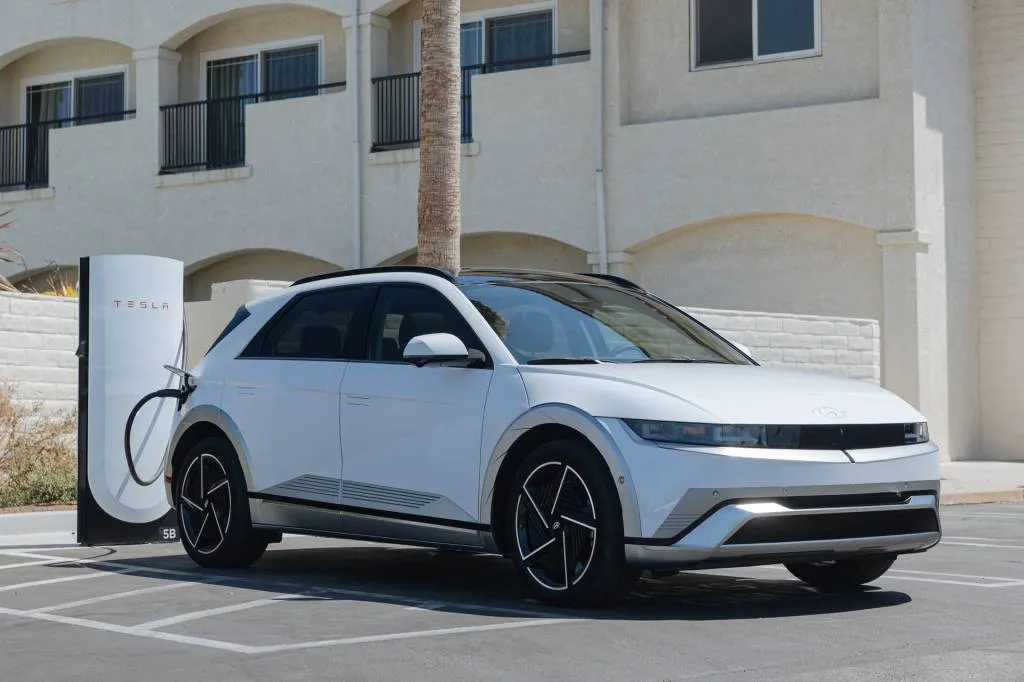
2025 Hyundai Ioniq 5
Adapter needed for the fastest 2025 Ioniq 5 charge
The reason for that is simple: Tesla Superchargers, up until now, aren’t able to deliver the voltage that Hyundai’s EVs built on its 800-volt E-GMP platform can accept. That’s due to change over the next few years, which we’ll get to, but in the meantime the “legacy” CCS chargers do it faster.
Hyundai confirmed to Green Car Reports that 257 kw is the new peak charge rate for its 84-kwh battery pack (versus 235 kw for the former 77.4-kwh pack on Long Range versions), with the adapter and a 350-kw CCS connector. It specifically mentioned Electrify America as an example for where this maximum would be possible, and said there would be no fringe limitations of the adapter that might slow the charge rate beyond what a CCS connector would otherwise deliver.
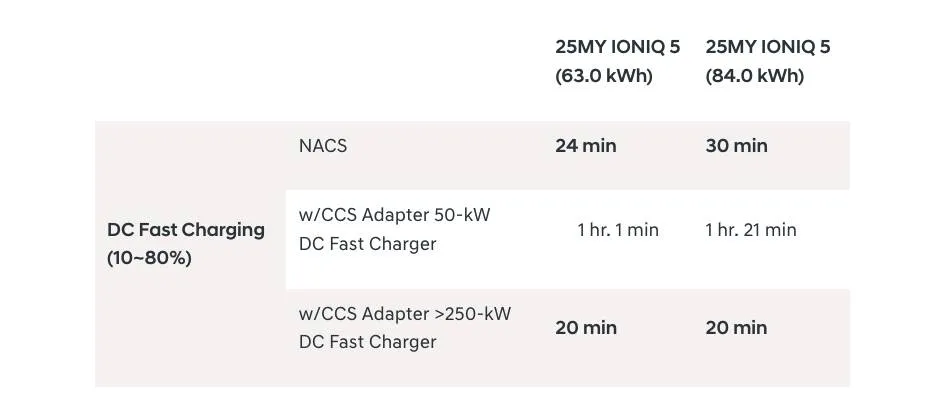
Hyundai Ioniq 5 charge times for NACS (Supercharger) vs. CCS
With the smaller 63-kwh battery pack included in the Standard Range models (up from 58 kwh for 2024), there’s not as much of a disparity, and official 10-80% times land at 20 minutes and 24 minutes with CCS/adapter and via Tesla Supercharger V3 hardware, respectively.
Level 2 AC charging rates aren’t affected by the adapter, and the Ioniq 5’s 10.9-kw onboard charger allows a 10-100% charge in as little as 7.3 hours with the 84-kwh battery pack or 5.7 hours with the 63-kwh pack.
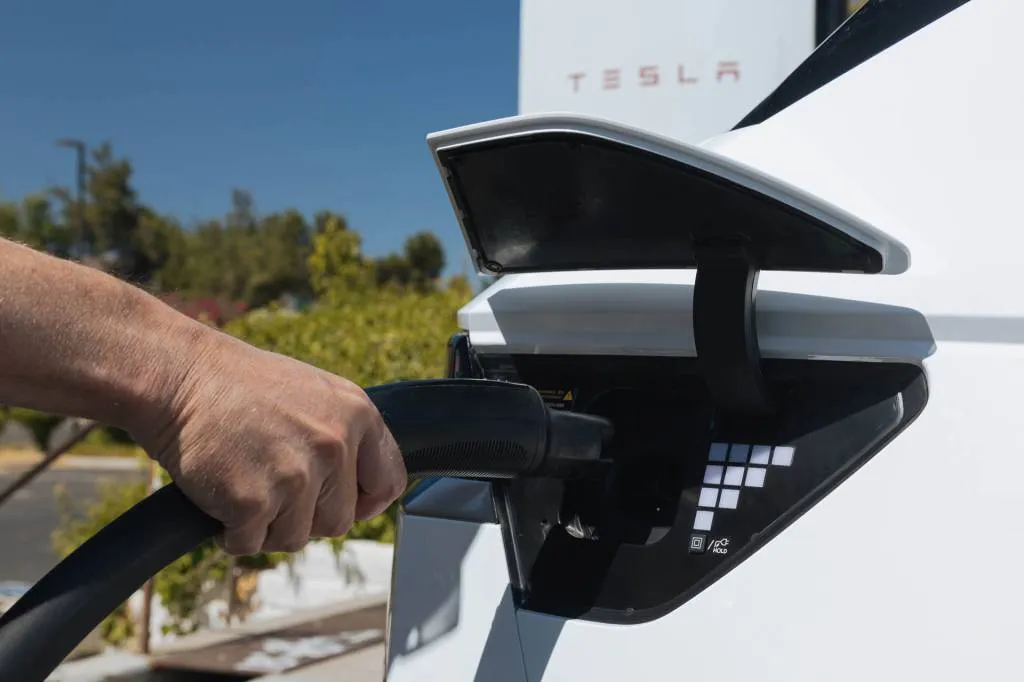
2025 Hyundai Ioniq 5
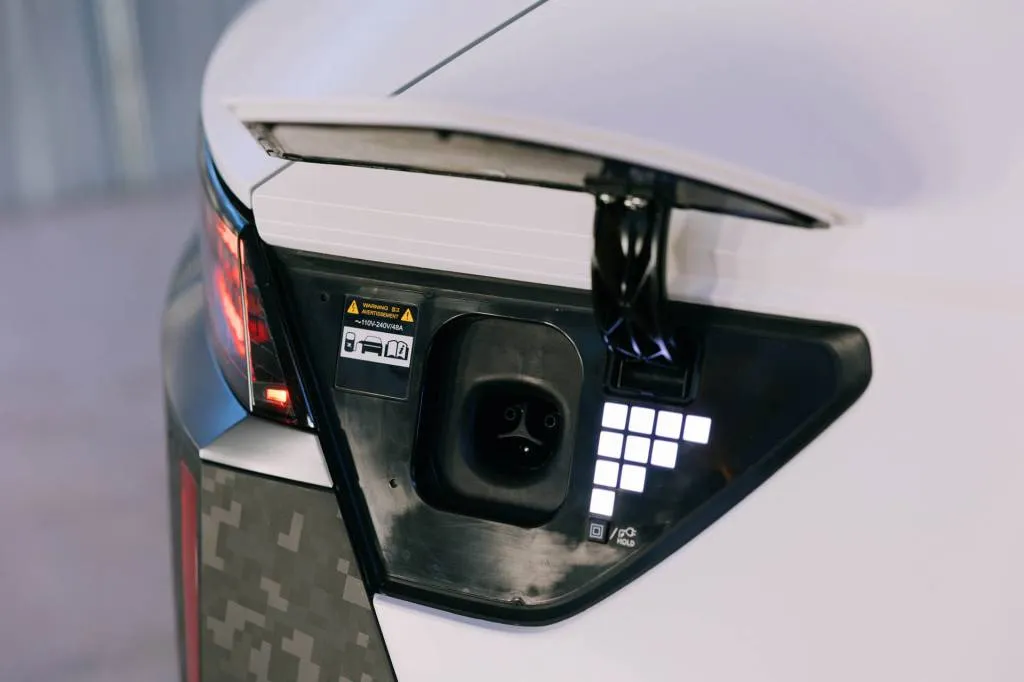
2025 Hyundai Ioniq 5
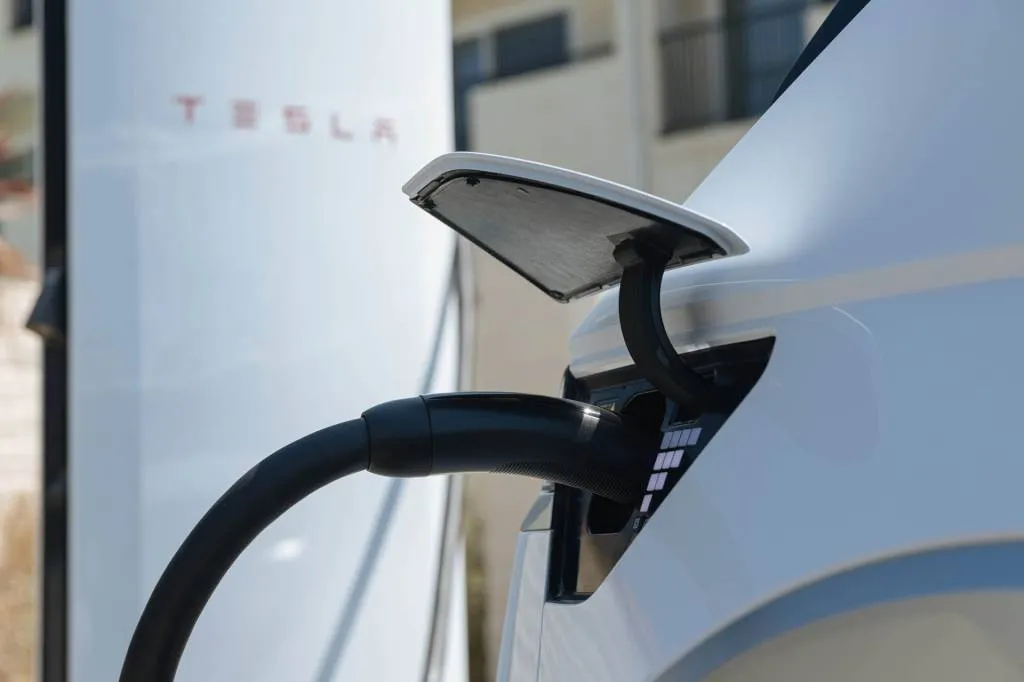
2025 Hyundai Ioniq 5
Speediest Ioniq 9 charge rate also relies on adapter
The automaker has released a similar comparison for its upcoming Ioniq 9 electric SUV, which will have a much larger 110.3-kwh battery pack and ship initially with the NACS port. With it and a CCS adapter the Ioniq 9 will charge from 10-80% in 24 minutes (with a peak of 233 kw), whereas it will take 38 minutes natively on NACS, using Tesla Supercharger V3 hardware.
So in an ideal situation—certainly harder to come by with CCS than with Supercharger hardware—a CCS adapter could save 10-14 minutes with Hyundai’s 800-volt E-GMP EVs.
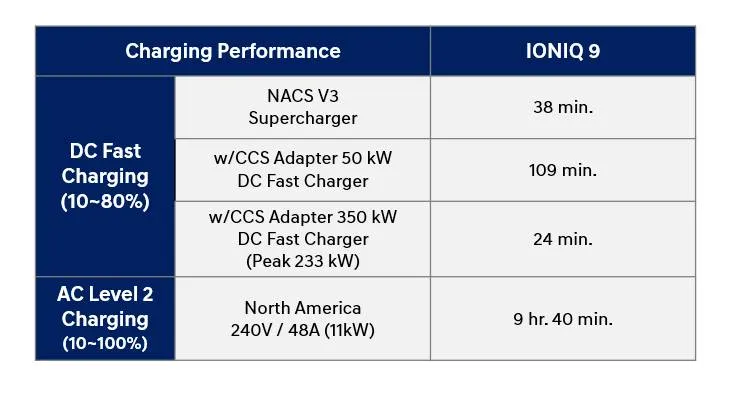
Hyundai Ioniq 9 charge times for NACS (Supercharger) vs. CCS
In the coming months, the whole Ioniq 5 lineup is getting the NACS port—except for the high-performance Ioniq 5 N, which will stay Korean-built for now and keep offering its CCS port for this year, while the rest of the Ioniq 5 lineup is shifting to U.S. production. Hyundai has already announced that all U.S.-market Ioniq 5 models are due to be sourced from Georgia eventually.
It hasn’t yet said exactly when the NACS port will arrive on Ioniq 6 electric sedans, but that’s also due for production at Hyundai’s so-called Metaplant America in Georgia.
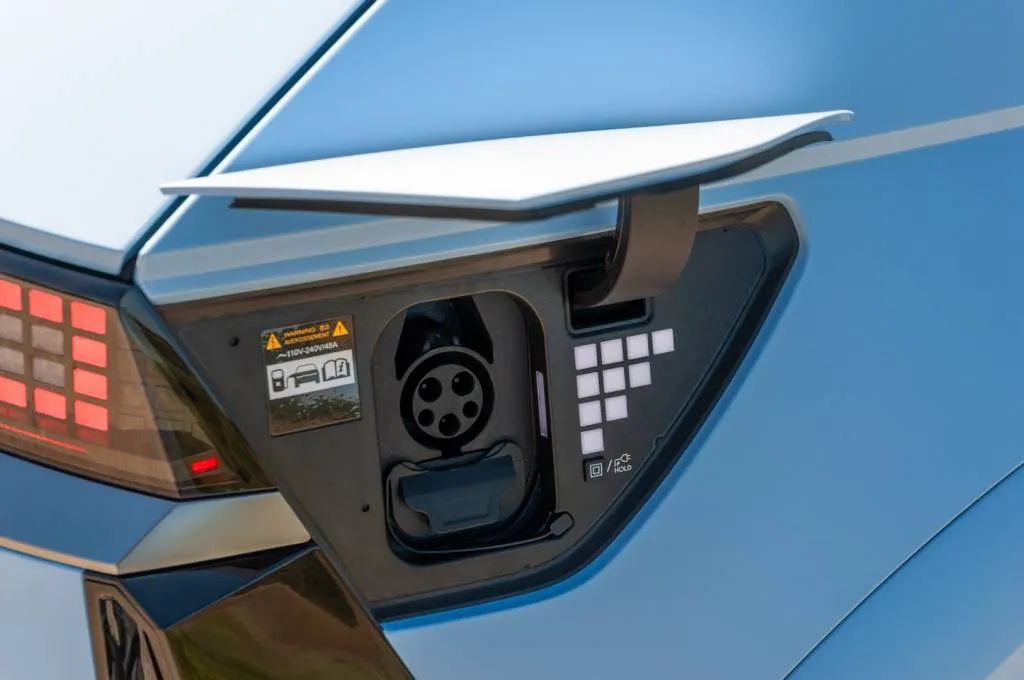
2025 Hyundai Ioniq 5 N
Hyundai is using its own charge ports and adapters, rather than buying them from Tesla, and it’s said that this will enable the full range of bidirectional capabilities of its latest E-GMP electric vehicles, including V2L to power accessories, camping gear, and more.
Supercharger access will come in the first quarter of 2025, but it will require that drivers initiate charging through the Tesla app initially rather than using Plug & Charge via Hyundai’s app and interface.
Superchargers won’t lag for long
Tesla announced its V4 Supercharger hardware in 2022, and it made some first installations in 2023, but there’s been no widespread rollout as of yet. And although a number of locations have included the V4 post, including longer charge cords and upgraded connectors, the hardware behind it remained missing.
On November 18, Tesla finally confirmed that the full V4 is on the way soon, with sites backed by actual V4 cabinets in permitting now and due to be opened in 2025.
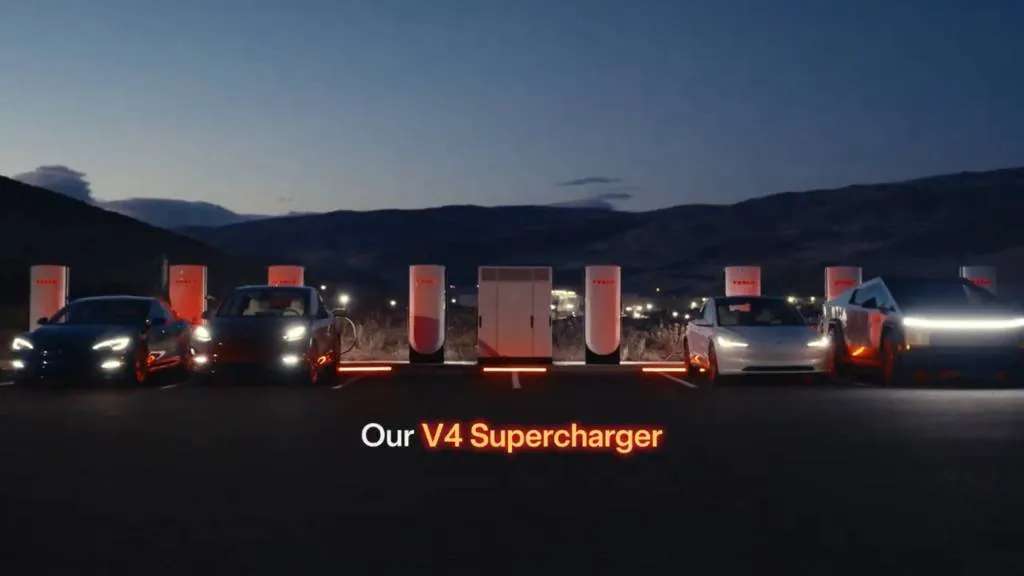
Tesla Supercharger V4 Cabinet upgrade set for 2025 (screencap)
Each V4 cabinet powers eight charging posts, versus four posts each for V3 cabinets, which Tesla notes means a reduction in the footprint of the hardware and the overall complexity—a factor that means more sites will come online faster.
Tesla says that the V4 cabinet will be able to deliver up to 500 kw for cars and up to 1.2 megawatts for the Semi. It hasn’t said where exactly peak power will be for the Cybertruck, but it notes that this change will mean 30% faster charging for that model. That roughly corresponds to the peak power of 327 kw that multiple sources have reported for the Cybertruck when using CCS adapters (and tapping into its full 800-volt charging potential).
Charge rates for Tesla’s own Model 3 and Model Y, by the way, won’t change.
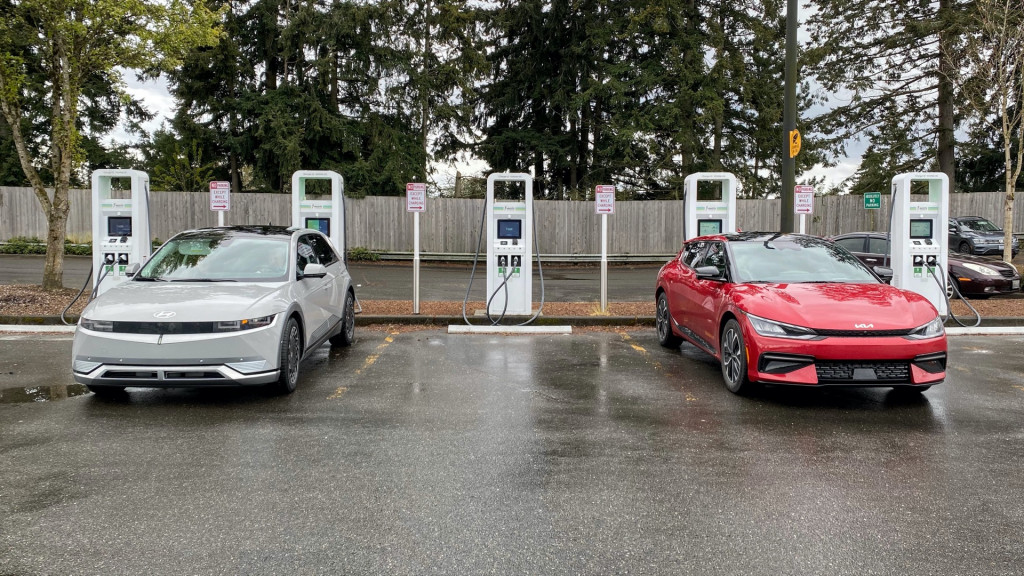
2022 Hyundai Ioniq 5 and Kia EV6 fast-charging – Lacey, WA
What it means: Look for the most convenient charger
In all, for Hyundai EVs, a time difference of 10-14 minutes likely won’t matter much in the scope of things—especially considering that Tesla Supercharger stations tend to be more reliable and tend to offer locations that are sometimes better-located along typical road-trip routes.
That said, it’s pretty close to the difference that Hyundai owners face in whether to choose a 150-kw CCS connector directly on the way, or go slightly off-route for a 350-kw connector. As we’ve pointed out before, the vast majority of the time, 150-kw connectors will provide such a speedy charge on EVs like the Ioniq 5 or Ioniq 6, with relatively lean battery packs and long range from them, that you shouldn’t seek out 350-kw connectors. Just go with the more convenient location.
But soon, with Tesla Supercharger cabinets and connectors at last able to deliver the voltage that EVs like the Ioniq 5, Ioniq 6, and Ioniq 9 can all take advantage of, finding a more convenient Tesla connector may no longer mean a longer charging stop. And with a push of infrastructure coming from Ionna, which is supported by Hyundai as well as six other automakers, there’ll be no shortage of high-power, high-voltage connectors, no matter which standard.
2025 Lincoln Aviator
 What kind of vehicle is the 2025 Lincoln Aviator? What does it compare to? The Lincoln Aviator three-row crossover SUV slots between the smaller Nautilus and the full-size Navigator. Related to the Ford Explorer but with a more refined cabin, a more advanced suspension, and a more powerful standard powertrain, the Aviator’s rivals range from…
What kind of vehicle is the 2025 Lincoln Aviator? What does it compare to? The Lincoln Aviator three-row crossover SUV slots between the smaller Nautilus and the full-size Navigator. Related to the Ford Explorer but with a more refined cabin, a more advanced suspension, and a more powerful standard powertrain, the Aviator’s rivals range from…
First retail 2025 Chevy Corvette ZR1 heads to auction
 The first sale will happen at Barrett-Jackson’s upcoming Scottsdale auction All proceeds will benefit the American Red Cross Customer deliveries for the ZR1 are scheduled to start in early 2025 With the arrival of the 2025 Chevrolet Corvette ZR1 and its screaming twin-turbocharged V-8 capable of hitting 1,064 hp, America’s sports car is verging on…
The first sale will happen at Barrett-Jackson’s upcoming Scottsdale auction All proceeds will benefit the American Red Cross Customer deliveries for the ZR1 are scheduled to start in early 2025 With the arrival of the 2025 Chevrolet Corvette ZR1 and its screaming twin-turbocharged V-8 capable of hitting 1,064 hp, America’s sports car is verging on…
AC’s Cobra GT gets price cut with new entry-level engine
 Christmas has come early for fans of the modern AC Cobra GT. AC on Monday announced a new 2.0-liter engine option that will bring the starting price of the retro sports car down to a targeted 235,000 British pounds (approximately $294,400). Final pricing and specifications will be announced closer to the market launch next year, though AC…
Christmas has come early for fans of the modern AC Cobra GT. AC on Monday announced a new 2.0-liter engine option that will bring the starting price of the retro sports car down to a targeted 235,000 British pounds (approximately $294,400). Final pricing and specifications will be announced closer to the market launch next year, though AC…

Canoo reportedly places remaining employees on “mandatory unpaid break”
Electric vehicle startup Canoo has placed its remaining employees and what it calls a “mandatory unpaid break” through at least the end of the year, TechCrunch reports.
The report cites an email sent to employees, which said they would be locked out of Canoo’s systems at the end of the day Friday, and that benefits would last through the end of December.
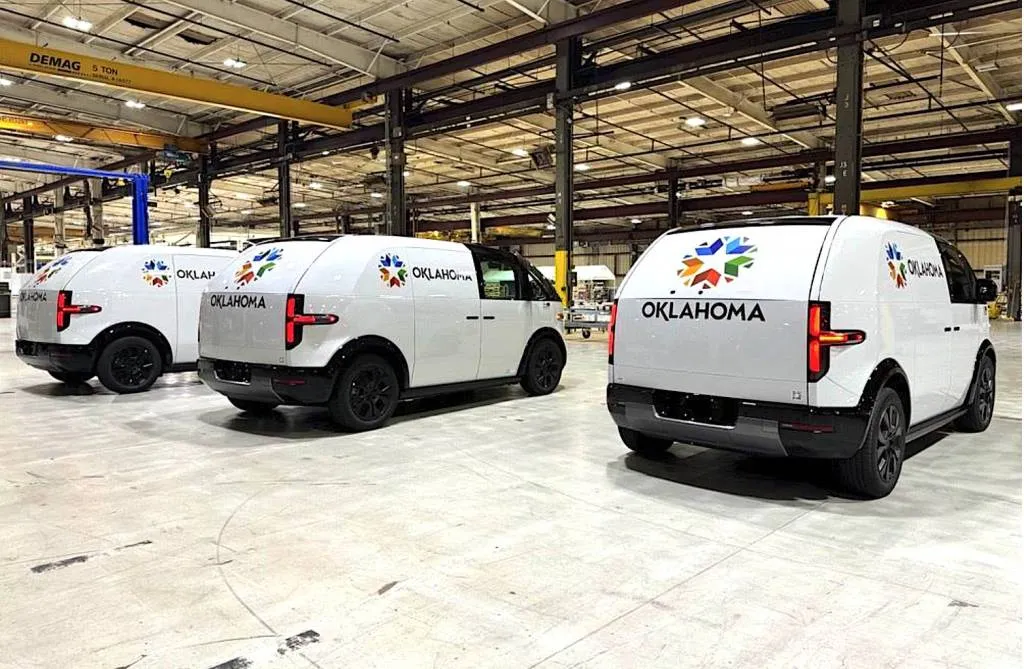
Canoo in Oklahoma
This comes just a few days after Canoo announced that it was furloughing 82 employees and idling an assembly facility in Oklahoma due to lack of funding, TechCrunch notes. That facility hasn’t ramped up production; so far Canoo has only delivered small numbers of demonstration vehicles, including some for the U.S. Postal Service.
Canoo also earlier this year closed the Los Angeles office that originally served as its headquarters. In August the startup announced a move to Justin, Texas, where it’s maintained a corporate office since CEO Tony Aquila took over a few years ago.
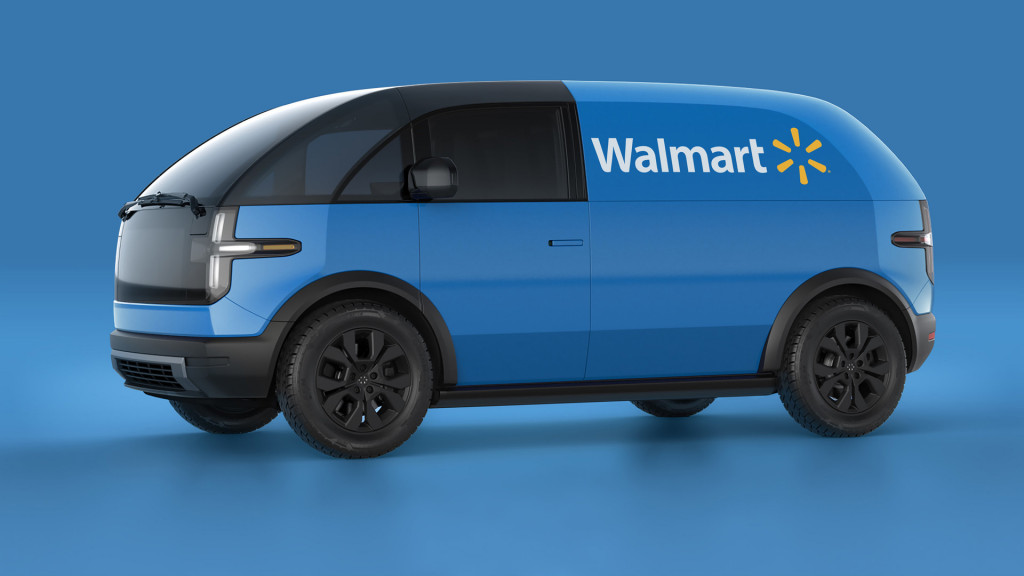
Canoo Lifestyle Delivery Vehicle with Walmart logo
Canoo has lost many executives, including its CTO, CFO, and general counsel, meaning most of the original contingent that launched the startup in 2017 is now gone. That’s coincided with a change in direction under current CEO Aquila, who pivoted Canoo from its original plan of selling van-like EVs on a subscription basis toward commercial vehicles.
That pivot as attracted interest from Walmart and fleet-management company Zeeba, which announced orders for 4,500 and 3,000 Canoo electric vans, respectively, in 2022. In addition to the Postal Service, Canoo has also provided a handful of vans to NASA and an electric pickup truck prototype to the U.S. Army. But the startup hasn’t been able to convert this hype into revenue by ramping up vehicle production.

Honda and Nissan merger planned by 2026 to fend off Tesla and Chinese EVs
- Merger talks have begun between Honda and Nissan
- The merger will put the automakers under a joint holding company by August 2026
- EVs, hybrids, platforms, and software will be at the core of overlap
A potential strategic partnership between Honda and Nissan would ally them on intelligence, EVs, and more, the global automakers confirmed on Monday.
The companies signed a memorandum of understanding as a first step toward merger talks, with Mitsubishi potentially joining as a third partner. Nissan already owns approximately 34% of Mitsubishi shares, and there has been some platform-sharing between the two automakers.
The plan is for the merged automakers to operate under a holding company with a delisting of both automakers on the Tokyo Stock Exchange at the end of July or August of 2026. The shares of both companies would then be transferred into he new holding company.
A report from Japanese news outlet Nikkei cited competition from Tesla and Chinese automakers in the EV segment as one of the main factors behind the merger.
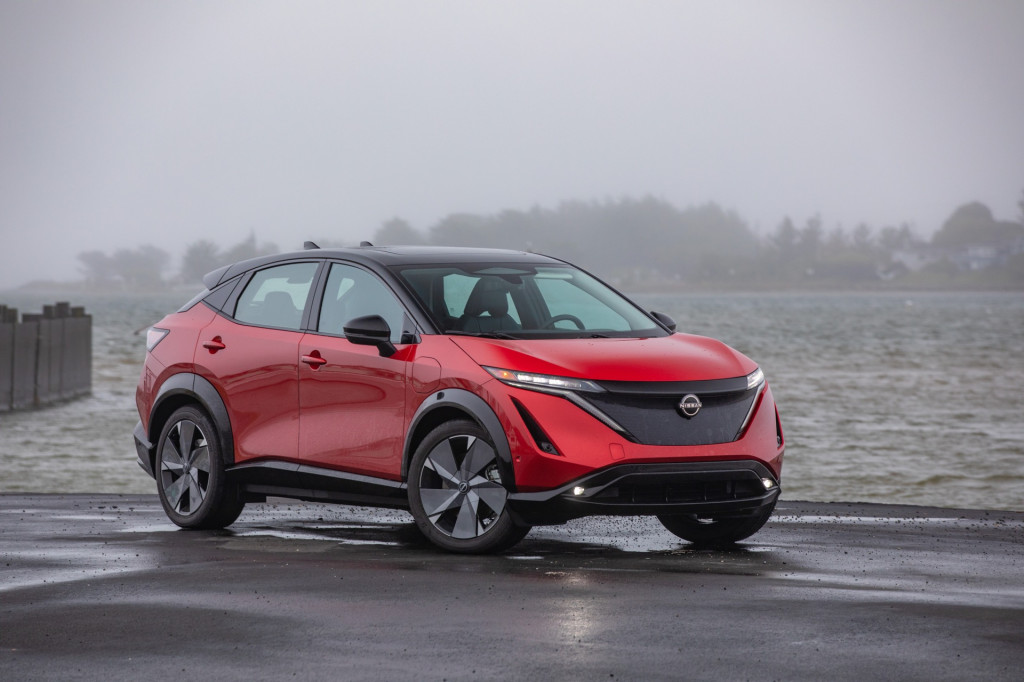
2023 Nissan Ariya e-4orce
This follows a March announcement by Honda and Nissan of a memorandum of understanding for a “strategic partnership in the fields of vehicle electrification and intelligence” expected to cover EVs, hybrids, and software. Mitsubishi was tipped to join that partnership in August. The current alliance between Nissan, Mitsubishi, and French automaker has also collaborated with Honda in the past, most recently on the Altna battery-leasing joint venture.
Combined sales of Honda and Nissan in 2023 totaled more than 8 million vehicles. That would make the merged automaker the third largest by sales volume after Toyota and the Volkswagen Group, which sold 11.2 million and 9.2 million vehicles in 2023, respectively.
A full merger will likely be a needed lifeline for Nissan. The automaker in October announced plans to lay off approximately 9,000 employees, representing 6.7% of its global workforce, and cut production capacity by 20% due to declining sales, primarily in the U.S. and China.
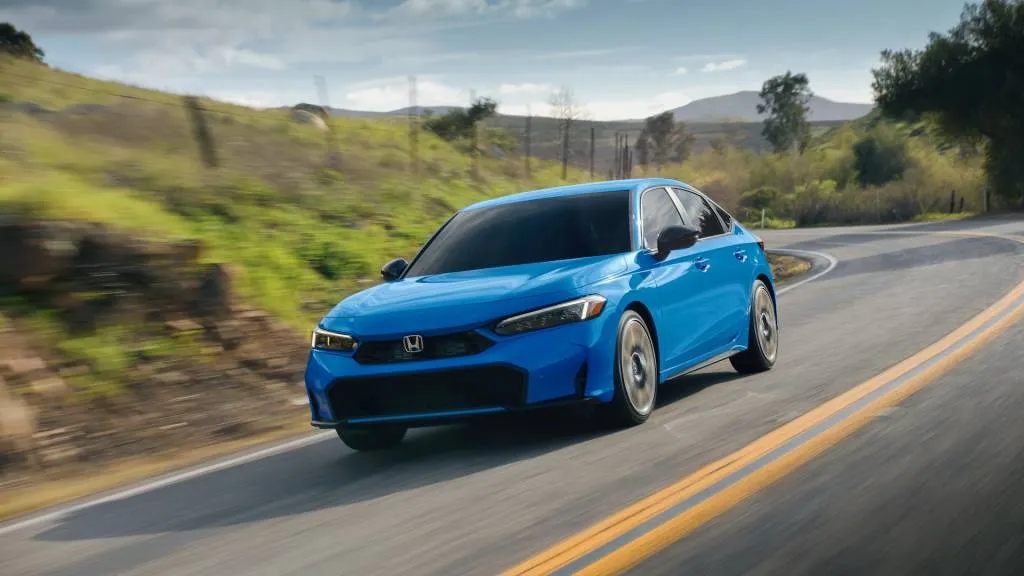
2025 Honda Civic Hybrid
Both automakers are in the midst of an EV reset, with Honda preparing to roll out its 0 Series starting in 2026 and Nissan preparing a next-generation Leaf, as well as larger models for assembly in Mississippi.
The automakers noted the merger would allow for optimization of manufacturing systems and facilities and standardization of vehicle platforms.
Hybrids could present more immediate opportunities for integration. Honda’s two-motor hybrid system could replace Nissan’s e-Power hybrid system, which still hasn’t made it to the U.S. after years of discussion. Nissan, meanwhile, could take the lead in electrifying pickup trucks and SUVs—including the body-on-frame models Honda currently lacks.
This story was updated on Dec. 23 after the automakers confirmed the merger plans.
Stellantis developing heated wheel-well liners
 Stellantis is looking to patent heated wheel wells to keep snow and ice from building up during winter driving. This feature is described in a patent application published by the United States Patent and Trademark Office (USPTO) Oct. 31, 2024, but filed by Stellantis Apr. 25, 2023. As described in the filing, it would rely on an electric heating…
Stellantis is looking to patent heated wheel wells to keep snow and ice from building up during winter driving. This feature is described in a patent application published by the United States Patent and Trademark Office (USPTO) Oct. 31, 2024, but filed by Stellantis Apr. 25, 2023. As described in the filing, it would rely on an electric heating…
2025 Volvo XC40
 What kind of vehicle is the 2025 Volvo XC40? What does it compare to? The 2025 Volvo XC40 is a small crossover SUV with just enough high-end details to qualify as a luxury model. Compare it to the Mercedes-Benz GLA- and GLB-Class models plus the BMW X1. Is the 2025 Volvo XC40 a good SUV? It’s not the freshest design in its segment and its…
What kind of vehicle is the 2025 Volvo XC40? What does it compare to? The 2025 Volvo XC40 is a small crossover SUV with just enough high-end details to qualify as a luxury model. Compare it to the Mercedes-Benz GLA- and GLB-Class models plus the BMW X1. Is the 2025 Volvo XC40 a good SUV? It’s not the freshest design in its segment and its…

Electric Rolls-Royce conversions make classic luxury silent
Rolls-Royce has always prided itself on the quietness of its luxury cars, hence its use of names like Phantom, Ghost, and Spectre. So a near-silent electric powertrain would seem like a good fit.
U.K.-based Evice certainly thinks so. It’s the latest in a crop of companies marketing electric conversions of classic cars, and its first project is a Rolls-Royce Silver Shadow sedan. Known internally as XP1, it’s a prototype for a conversion package for both the Silver Shadow and Corniche convertible that Evice hopes to start offering to customers in Spring 2026.
The prototype has a 77-kwh battery pack providing an estimated range of over 200 miles, likely as measured on the more lenient WLTP testing cycle, along with an 800-volt electrical architecture.
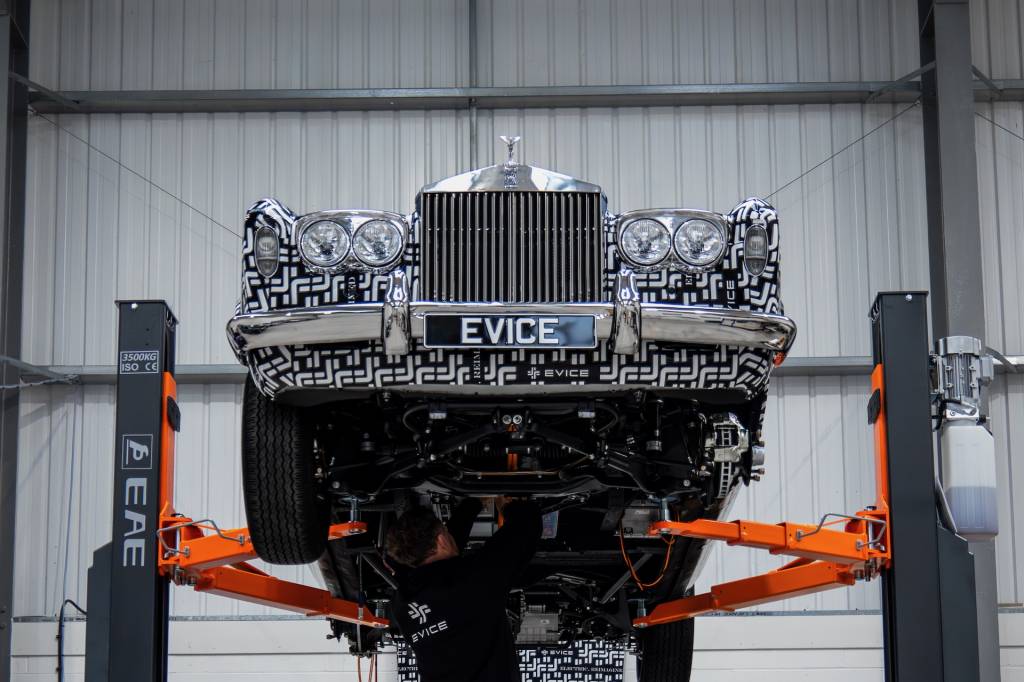
Prototype Rolls-Royce Silver Shadow EV by Evice
Output is 400 hp—substantially more than the original gasoline V-8 engine. Evice also claims to have upgraded the brakes, while an active suspension aims to provide the same pillowy ride as the original hydra-pneumatic suspension (derived from Citroën tech) with a greater degree of handling sharpness.
The interior features modern climate control and audio systems, as well as heated and ventilated power-adjustable seats and a touchscreen infotainment system with Apple CarPlay and a rearview camera.
Several other companies are restoring classic electric cars with modern powertrains—including some vintage Rolls-Royces. Another U.K. firm, Lunaz, has done electric conversions of the 1956 Rolls-Royce Cloud and 1961 Rolls-Royce Phantom V, as well as Bentley and Jaguar models.
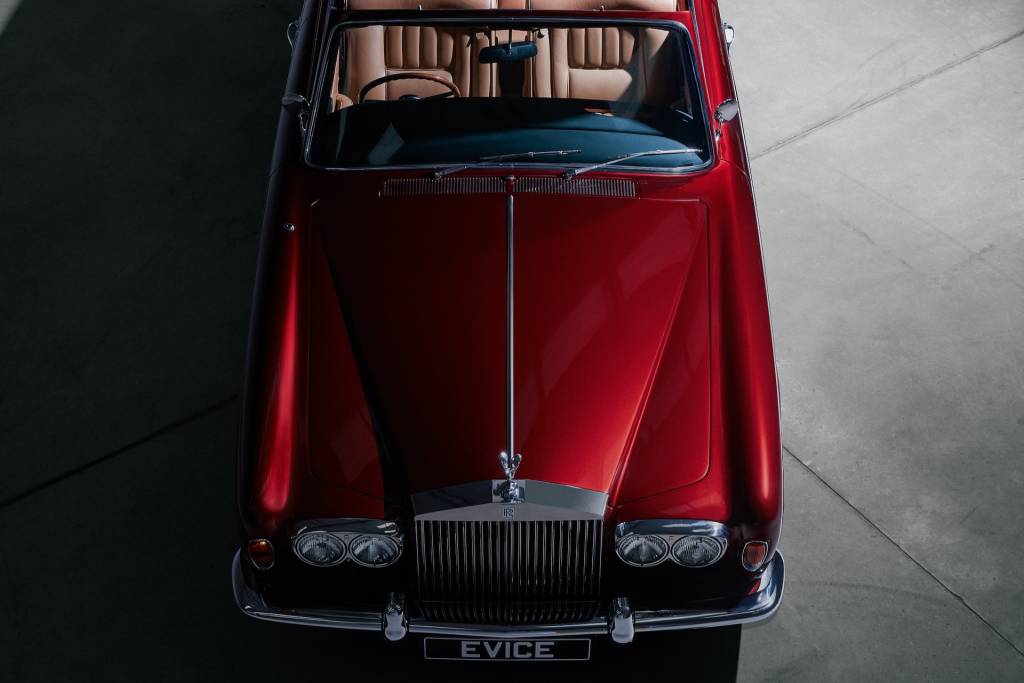
Rolls-Royce Silver Corniche EV by Evice
A few of these have also been undertaken by, or commissioned by, automakers looking to tie their heritage to current electrification plans. Yet another U.K. firm, Electrogenic, built a Kia Pride EV restomod to celebrate that automaker’s 80th anniversary. Apprentices recently turned an Audi A2—a European-market hatchback that was a paragon of fuel efficiency when new—into an EV.
It’s also now possible to buy a new electric Rolls-Royce from the factory—the Spectre coupe. The storied brand is looking to shake its traditional reputation for portly vehicles and gas-guzzling V-12 engines by going all-electric before the end of the decade.






